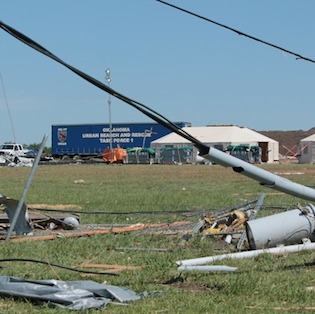Digital Disaster Planning for Your Small Law Firm
August 9, 2017

You already know the world is becoming a more dangerous place. From tornadoes to cyber terrorism, creating a business continuity plan has become a crucial part of staying competitive in a shifting world. If an unexpected event happens to your law firm, will you be ready? In these situations, you need a fast recovery and the ability to continue to serve clients. That’s the purpose of a digital disaster recovery plan.
What Steps Comprise a Disaster Recovery Plan
If you’ve ever had a laptop crash, you already know how tenuous our hold on documents created in the digital realm can be. Electronic data can be lost when a computer is missing or data is accidentally erased, or malware can cause a computer virus that wreaks havoc. You could also lose equipment to a natural disaster.
The ABA’s “Disaster Recovery for Law Firms” white paper suggests your business continuity plan should cover the following areas:
This is crucial advice from the ABA, who suggests, while law firms are concerned about security and business continuity, few of them are making moves to protect themselves.
In fact, Baseline suggests that 90% of the information that we deal with in the small law firm is digitally focused, meaning created on a computer or other digital equipment. Many of the other documents that we access may have been in written format, but these days they are scanned in and stored in a digital copy.
Since much of our work is now digital, these tactics can and certainly should apply in the digital space. Creating a digital business recovery process includes a number of steps to ensure the machines you’re using today and the critical digital data at your fingertips is not lost or stolen. Here are two of the most important steps you can take to ensure your business survives the next digital disaster that’s surely on the horizon:
We highly recommend automatic full network backups into the cloud by a managed service provider like TOSS C3. Backing up into the cloud takes files off premise, in case the crises event is a fire or flood affecting your building. Managed service providers can even house a virtual machine on separate off-site servers, which will allow you to dial into the cloud, and access your machine. What you will see will be exactly like the desktop you’re reading from now, but it will be housed remotely or “virtually.” We highly recommend this as a secondary step along with backups. That way, even if your in-office server is lost, you can step right back into the digital space and not miss a step.
Get a free assessment of your ability to recover in the event of a disaster.
Disaster Recovery Plan as a Managed Service
The benefit of having a managed service provider in your corner is that they handle the daily operations of your technology network. As part of that service, they can help you create a business continuity plan. It’s important to realize that these are living documents, meaning, they should not be created and shelved. It is crucial that you and your vendor are regularly working together to discuss and tweak the plan in light of the latest cyber security threats, or, as your use of technology changes.
Together, you and your managed service provider can create and maintain the steps necessary to help your law firm weather the storm.
Request a quote for managed services that will help keep your business safe.

Subscribe now and stay up to date with News, Tips, Events, Cybersecurity, Cloud and Data Compliance.